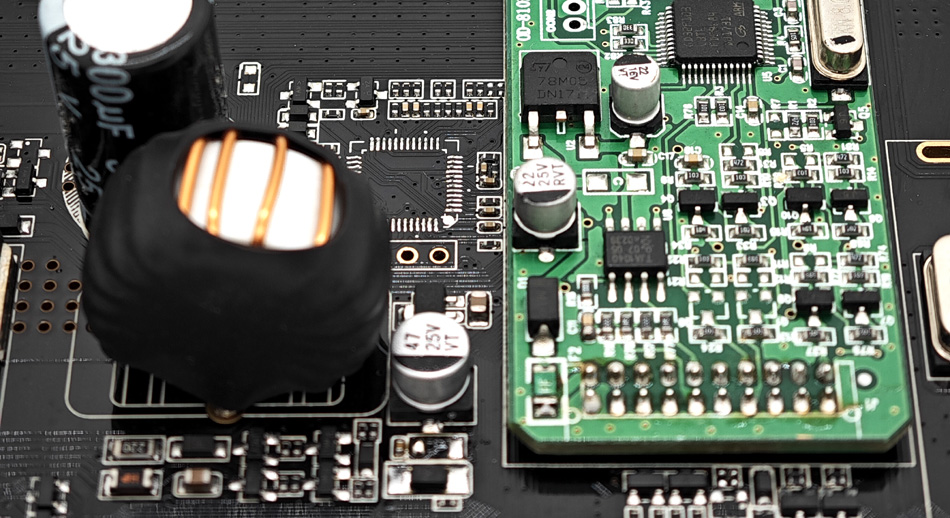- English
- Español
- Português
- русский
- Français
- 日本語
- Deutsch
- tiếng Việt
- Italiano
- Nederlands
- ภาษาไทย
- Polski
- 한국어
- Svenska
- magyar
- Malay
- বাংলা ভাষার
- Dansk
- Suomi
- हिन्दी
- Pilipino
- Türkçe
- Gaeilge
- العربية
- Indonesia
- Norsk
- تمل
- český
- ελληνικά
- український
- Javanese
- فارسی
- தமிழ்
- తెలుగు
- नेपाली
- Burmese
- български
- ລາວ
- Latine
- Қазақша
- Euskal
- Azərbaycan
- Slovenský jazyk
- Македонски
- Lietuvos
- Eesti Keel
- Română
- Slovenski
- मराठी
- Srpski језик
Conductive glue technology in PCBA processing
2024-07-29
In the process of PCBA processing (Printed Circuit Board Assembly), the conductive glue process is an important technology, which plays a key role in circuit connection, conductive repair and electronic component fixation. This article will discuss the conductive glue process in PCBA processing, including its principles, applications, advantages and precautions.

1. Principle of conductive glue process
The conductive glue process refers to the use of glue or materials with good conductive properties to fill the conductive holes on the circuit board or the conductive paths in the connecting circuit, so as to achieve the connection and conductive function of the circuit. Its principles mainly include the following aspects:
Conductive filling: Fill the conductive glue into the conductive holes or connection paths on the circuit board to form a conductive layer to achieve the connection and conductive function of the circuit.
Curing treatment: Through heating or UV curing, the conductive glue forms a stable conductive layer to ensure the conductive performance and connection stability.
2. Application of conductive glue process
The conductive glue process has a wide range of application scenarios in PCBA processing, mainly including but not limited to the following aspects:
Conductive hole filling: used to fill the conductive holes on the PCB circuit board to repair the poor connection or disconnection between the conductive holes and components.
Connection circuit repair: used to repair the breakage or damage of the wires on the circuit board and restore the conductive function of the circuit.
Electronic component fixation: used to fix electronic components and improve the connection stability and reliability between components and circuit boards.
3. The conductive glue process has the following advantages in PCBA processing:
Strong flexibility: The conductive glue can be filled into conductive holes or connection paths of different shapes and sizes according to actual needs, with strong flexibility and adaptability.
Good conductivity: The conductive layer formed after the conductive glue is filled has good conductivity and can meet the conductivity requirements of the circuit.
Strong repair ability: The conductive glue can repair problems such as the breakage of the wire or the open circuit of the conductive hole, and improve the reliability and stability of the circuit.
4. When applying the conductive glue process, the following matters need to be noted:
Glue selection: Select the appropriate conductive glue, considering factors such as the conductive properties, curing method and environmental adaptability of the glue.
Curing treatment: Strictly control the curing process of the conductive glue to ensure the stability and conductive properties of the conductive layer.
Quality inspection: Conduct quality inspection on the conductive layer after filling with conductive glue to ensure that the conductive layer meets the design requirements and process standards.
Conclusion
As one of the important technologies in PCBA processing, the conductive glue process has the advantages of strong flexibility, good conductivity and strong repair ability, and plays an important role in circuit connection and maintenance. When applying the conductive glue process, it is necessary to select suitable glue, strictly control the process flow, and conduct quality inspection to ensure the quality and stability of the conductive layer. With the continuous advancement of technology and the accumulation of experience, it is believed that the application of conductive glue technology in PCBA processing will become more and more extensive, and will bring new opportunities and challenges to the development of the electronics manufacturing industry.
-
Delivery Service






-
Payment Options









